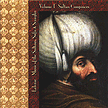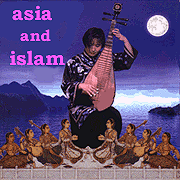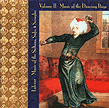 Lalezar "Music Of The Sultans, Sufis And Seraglio, v. 1: Sultan Composers" (Traditional Crossroads, 2000)
Lalezar "Music Of The Sultans, Sufis And Seraglio, v. 1: Sultan Composers" (Traditional Crossroads, 2000)
The first two of a four-CD collection of Ottoman Empire music, recorded by one of Turkey's premier folkloric ensembles. This series should appeal to world music enthusiasts and early music fans alike, as the music's antiquity is balanced by the passion and grace of the performers; also appealing are the exotic sounds of unusual instrumentation and the fascinating historical presentation. Volume One concentrates on the compositions of royalty -- formal court music written by various sultans during the 17th- 20th centuries. The Asiatic nature of Turkish classical music has never been more apparent, as well as the European influences that intertwined it during the heyday of the Empire. At least as the Lalezar ensemble performs it, this resembles a mix of Japanese classical with medieval liturgical vocals. The second disc has an even more colorful story behind it -- it is kocekce music, which was written for an unusual group of performers, the cross-dressing "dancing boys" of Istanbul. The dancing boys were a drag variant of the female erotic dancers of the time. Originally, the kocek were a respected part of Turkish cultural life, a professional performing class supported by the largesse of the Empire itself. However as the Ottomans lost ground militarily (and economically) in the 19th Century, many of the dancing boys lost their patronage and turned to more explicit prostitution in order to survive. This in turn led to their being banned, and their music suppressed by the sultans; elements of the kocekce music were gradually re-integrated into Turkish popular music, but this CD concentrates on the original versions. A little less accessible than the first volume, but fascinating nonetheless.

 Lalezar "Music Of The Sultans, Sufis And Seraglio, v. 2: Music Of The Dancing Boys" (Traditional Crossroads, 2000)
Lalezar "Music Of The Sultans, Sufis And Seraglio, v. 2: Music Of The Dancing Boys" (Traditional Crossroads, 2000)


